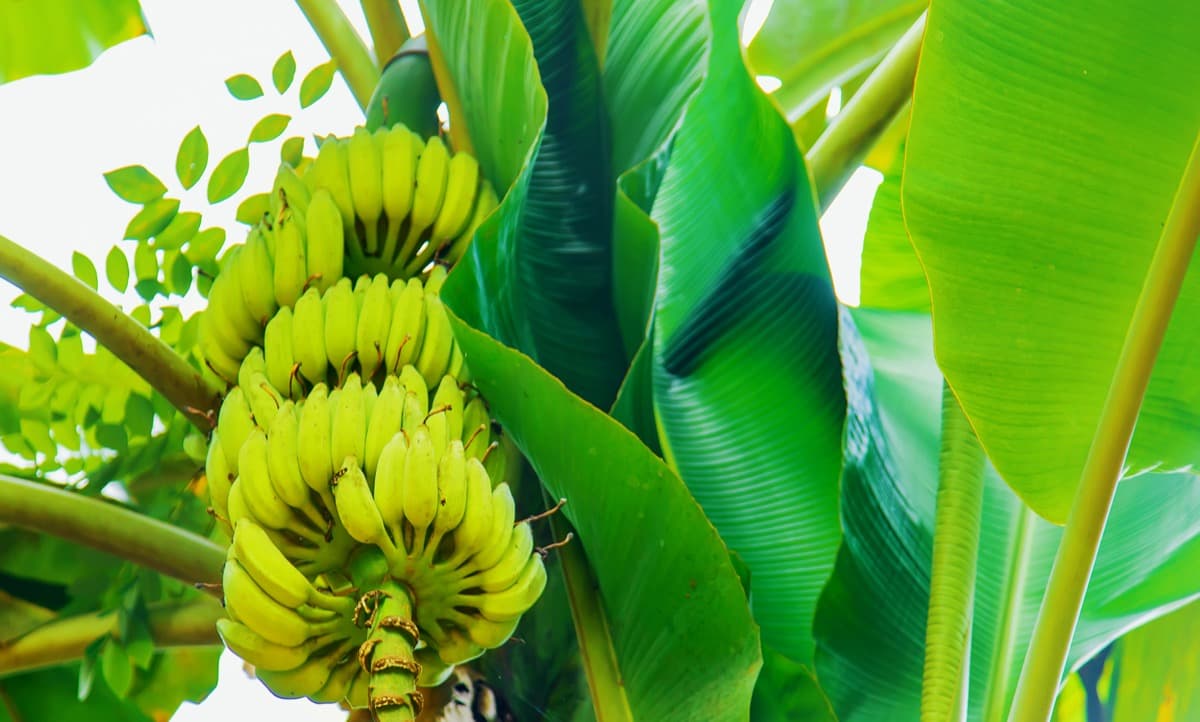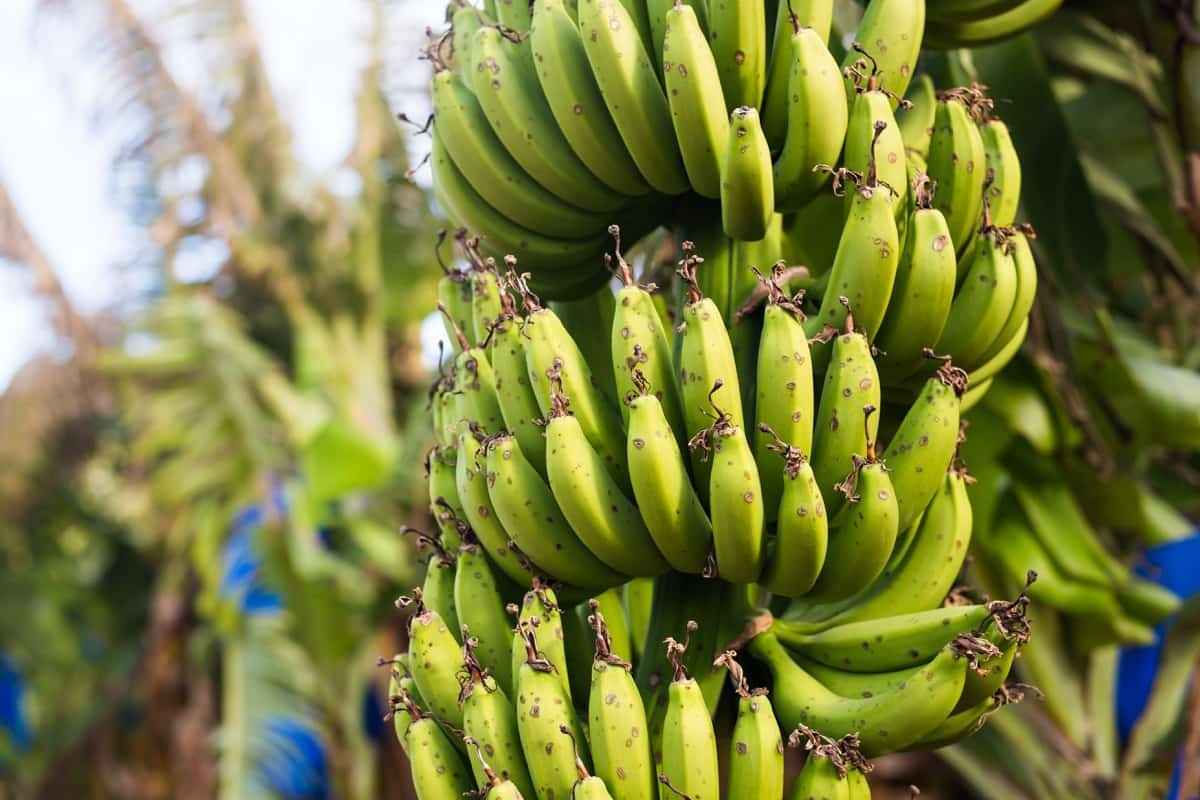The Banana Scab Moth Pest, Nacoleia octasema, belonging to the Family Crambidae of the Order Lepidoptera, is a serious pest of banana crops that feeds on both wild and cultivated banana varieties, causing significant yield losses and reduces the quality of the fruit. The pest is native to Australia. The damage to the fruit can render it unsuitable for consumption or sale, leading to significant financial losses for banana farmers and exporters.

Implementing effective pest management strategies to control its spread and minimize its damage is crucial. These strategies may include chemical insecticides, biological control agents, and cultural practices such as sanitation and crop rotation. To effectively manage this pest, it is important to understand its life cycle, its preferred habitats, and the best methods for controlling it. This article will provide an overview and discussion of the Banana Scab Moth Pest in Banana crops, including its symptoms, identification techniques, and control.
Banana Scab Moth Pest Management
Life Cycle of Banana Scab Moth Pest in Banana Crop
The lifecycle begins when the female lays eggs on the surface of the banana plant’s leaves. The eggs are usually laid in groups of 10-15 on the lower surface of the leaves. The eggs hatch after five to six days, and the larvae emerge. They immediately begin to tunnel into the banana plant’s tissues, where they feed and grow. As the larvae feed on the plant’s tissues, they leave scab-like damage. The larval stage lasts about three weeks, during which the larvae go through five to six instars, increasing in size and feeding intensity.
After feeding, the larva spins a cocoon and pupates inside it. The pupal stage lasts for about ten days before the adult moth emerges. The adult moth arises from the pupa, and after a few hours of rest, it is ready to mate and lay eggs. The adult moth’s lifespan is around two weeks, during which it can lay up to 150 eggs on the banana plant’s leaves. The Banana Scab Moth can undergo multiple generations per year.
Occurrence of Banana Scab Moth Pest in Banana Crop
- Location of Banana Scab Moth pest: This pest infests Banana crops in India, Africa, Sri Lanka, China, Thailand, Indonesia, the United States, Mexico, Brazil, Colombia, Ecuador, the Philippines, and Australia.
- Host range: The Banana Scab Moth is a polyphagous pest that infects crops like Banana, Plantain, Papaya, Mango, Guava, and Avocado.
Factors Favoring the Population Increase of Banana Scab Moth Pest in Banana Crop
- The pest thrives in warm and humid conditions. The optimal temperature range for the development of the Banana Scab Moth is between 25-30°C. Temperatures below 18°C and above 32°C can limit the pest’s development and survival.
- High humidity levels are favorable for the development of the moth. The pest can survive and reproduce in 70% or higher relative humidity. The pest can complete its life cycle faster in humid environments, resulting in higher infestation rates and increased crop damage.
- Strong winds can spread the pest to new areas, while heavy rainfall can create favorable conditions for the pest’s survival and development.
- Overcrowding banana plants can create favorable conditions for the pest, leading to higher infestation levels.
- The presence of alternative hosts for the pest can also increase the risk of infestation in banana crops.
Identification of Banana Scab Moth Pest in Banana Crop
- Egg: The eggs are tiny, white, and oval-shaped, measuring about 0.5mm in diameter.
- Larva: The larvae of the Banana Scab Moth are small, yellowish-brown, and about 2mm long when they first hatch.
- Pupa: The pupa is about 5mm long and initially yellowish-brown, but it gradually darkens over time.
- Adult: The Banana Scab Moth is a small, yellowish-brown moth that has a wingspan of around 10 mm.
Damage Symptoms of Banana Scab Moth Pest in Banana Crop
- The larvae feed on the plant’s tissues, leaving behind a trail of scab-like damage that is easily noticeable.
- The pattern of egg laying of this moth resembles overlapping fish scales.
- The larvae, while feeding on fruits, cause superficial scarring of epidermal tissue.
- The damage caused by the moth can reduce the plant’s ability to photosynthesize, which can cause stunted growth, reduced yield, and even death.
- The moth’s larvae bore into the plant’s tissues, causing severe damage to the leaves, stems, and fruit, resulting in reduced yield and even complete crop loss.
In case you missed it: Banana Spiralling Whitefly Pest Management: Symptoms, Treatment, Chemical, Biological, and Organic Control

Percentage of Yield Loss in Bananas Due to Banana Scab Moth Pest
- In India, the yield losses due to Banana Scab Moth pests are 30%. In Thailand, the percentage of yield loss is 10-50%. In Thailand, it is 30%. In Sri Lanka, the losses are 25%. In Indonesia, the losses are 50%. In Africa, it is 50%. In the United States, it is 40%. In Mexico, it is 50%. In Brazil, it is 40%. In China, it is 40%.
- In Colombia, the losses are 25%. In Ecuador, it is 30%. In Australia, it is 30%. In the Philippines, the yield losses are 25%. The Economic Threshold Level (ETL) for the Banana Scab Moth pest is 5-10% infestation of plants.
Cultural Control of Banana Scab Moth Pest in Banana Crop
- Maintain good field sanitation practices by removing and destroying infested banana plant parts and crop debris as soon as possible to reduce pest population build-up.
- Pruning can reduce the pest population by removing old leaves and pseudostems that can harbor the pest. This can also increase the amount of sunlight and air circulation in the plantation, making it difficult for the pest to survive.
- The rotation of banana crops with other crops, such as legumes or cereals, breaks the pest’s life cycle and reduces its population.
- Mulching involves covering the soil around the banana plants with organic material. This helps to improve soil health and reduce the population of pests.
- Use light and pheromone traps to monitor, attract and kill adult pests.
Biological Control of Banana Scab Moth Pest in Banana Crop
- Predators such as ants, spiders, and predatory mites can help reduce the pest population.
- Parasitoids, such as parasitic wasps and flies, can control the moth by laying their eggs on or inside the pest, which eventually develops and kill the host.
- The entomo-pathogenic fungus Beauveria bassiana infects and kills the pest.
Chemical Control of Banana Scab Moth Pest in Banana Crop
- Spray insecticides on the crops like Imidacloprid, Malathion, Lambda-cyhalothrin, or Chlorpyrifos on the foliage to control the pest.
- Soil application – Mix the soil with Carbaryl to repel the pest from the field.
Organic Control of Banana Scab Moth Pest in Banana Crop
- Biopesticides like Bacillus thuringiensis can be sprayed on the plants to control the pest.
- Plant extracts from neem, lantana, garlic, cinnamon, ginger, turmeric, and chili can be applied to manage the infestation.
- Spinosad is effective against both larvae and adult stages of the moth and has a relatively short residual effect. Spinosad is a natural insecticide derived from the fermentation of a soil bacterium.
Preventive Measures for Control of Banana Scab Moth Pest in Banana Crop
- Planting disease-free and pest-free planting material can prevent pest incidence.
- Proper irrigation practices can prevent the stress on the banana plants, which makes them more susceptible to the Banana Scab Moth Pest. Irrigate the crop regularly and avoid over-watering.
- Monitor the crops regularly using pheromone traps to identify pest infestation in the early stages to keep it under control.
In case you missed it: Banana Cutworm Pest Management: Symptoms, Treatment, Chemical, Biological, and Organic Control

Conclusion
The Banana Scab Moth Pest, Nacoleia octasema, is a serious pest of banana crops worldwide, causing damage and yield losses. Effective management of this pest requires a combination of preventive control measures, including field sanitation, proper cultural practices, regular monitoring, chemical control, and biological control. By implementing these measures, farmers can reduce the pest population, minimize the risk of infestation, and ensure healthy and productive banana crops.
- Beneficial Insects in Pest Management
- Natural Solutions for Pest Control in Flower Gardens
- Types of Fungicides Used in Agriculture
- Common Issues in the Fruit Development Stage of Pomegranate Farming
- Fruit Development Issues in Papaya: Easy Solutions and Treatment
- Soil-Borne Diseases and How to Protect Your Plants
- Practices to Prevent Disease Spread in the Garden
- From Wilted to Thriving: How to Treat Root Rot Naturally in Houseplants
- Natural Remedies to Cure Brown Spots on Fig Tree Leaves